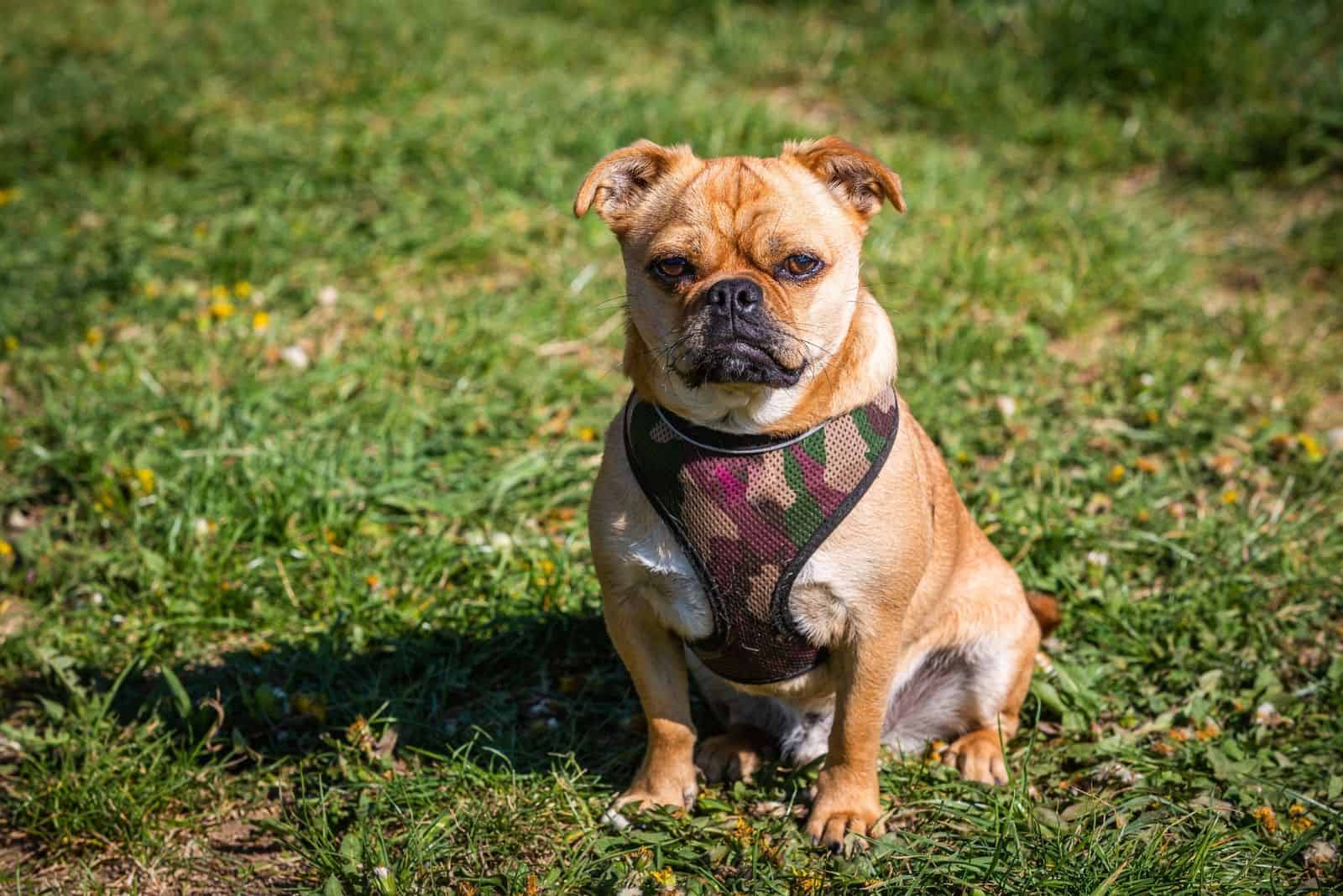Designer dogs are taking over the world!
At least, it sometimes seems that way as we see fascinating crossbreed dogs emerging almost daily. Will they eventually replace traditional breeds? That’s unlikely at the moment, but they are certainly taking the world by storm right now.
It’s a controversial subject as breed enthusiasts and kennel clubs generally disapprove of hybrids. They believe in keeping breeds ‘pure’, claiming that mixed-breed dogs have a greater risk of being unhealthy.
Fans of hybrids dispute this, pointing out that purebred dogs are far more likely to inherit diseases because of the restricted gene pool. And, it has to be said that the facts appear to support them in this: mixing two different breeds immediately injects fresh genes, reducing the risk of an inherited sickness.
Many purebred dogs are prone to particular diseases and painful conditions purely because breed standards state that the dog must retain a traditional form.
Whatever the argument, hybrid dogs aren’t going away any time soon.
We’re going to take a close look at one of these hybrids: the Corgi Pug mix. We’ll examine the two parent breeds before moving on to find out what this unusual hybrid is like, how much it might cost, and what’s involved in terms of grooming and care, and we will provide you with everything you need to know.
Right, let’s get started!
What Is A Corgi Pug Mix Called?
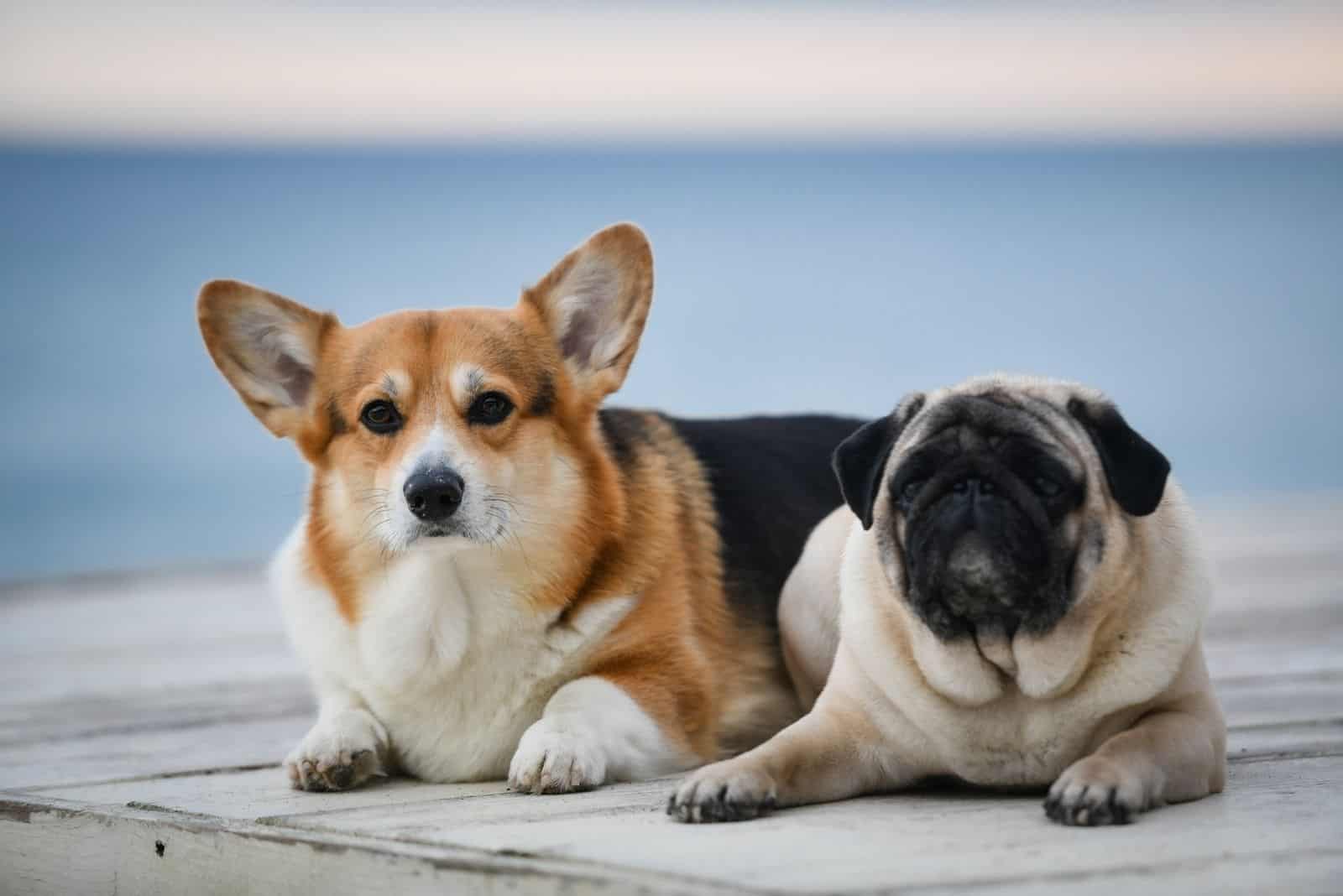
For every new mixed-breed dog, there’s the problem of choosing a name.
Traditional, purebred dogs can be registered with kennel clubs, and their names have been established for decades.
They are rarely changed officially, although we like to shorten them sometimes, as in Lab instead of Labrador, or Mal in place of Belgian Malinois. Most breed enthusiasts will have a nickname for their breed, and that’s great.
With hybrids, it’s more difficult because most can’t be registered. The majority of kennel clubs will not accept them as they are not purebred dogs.
So, people make up the names themselves, usually splicing the two breeds together. This leads to such delights as the Cockapoo, the Chug, the Pitsky, the Frug, and the Goberian*.
That means that with the Corgi Pug mix, we might get Corgipug, Pugorgi, or Porgi. The last of these is the most popular, and it works better than the others, so it will probably stick.
Now that we know its name, let’s look at the two dog breeds that make up this fascinating pooch.
*If you’re curious to know which breeds these are, it’s the Cocker Spaniel/Poodle, the Chihuahua/Pug, the Pitbull/Husky, the French Bulldog/Pug, and the Golden Retriever/Siberian Husky!
The Pug
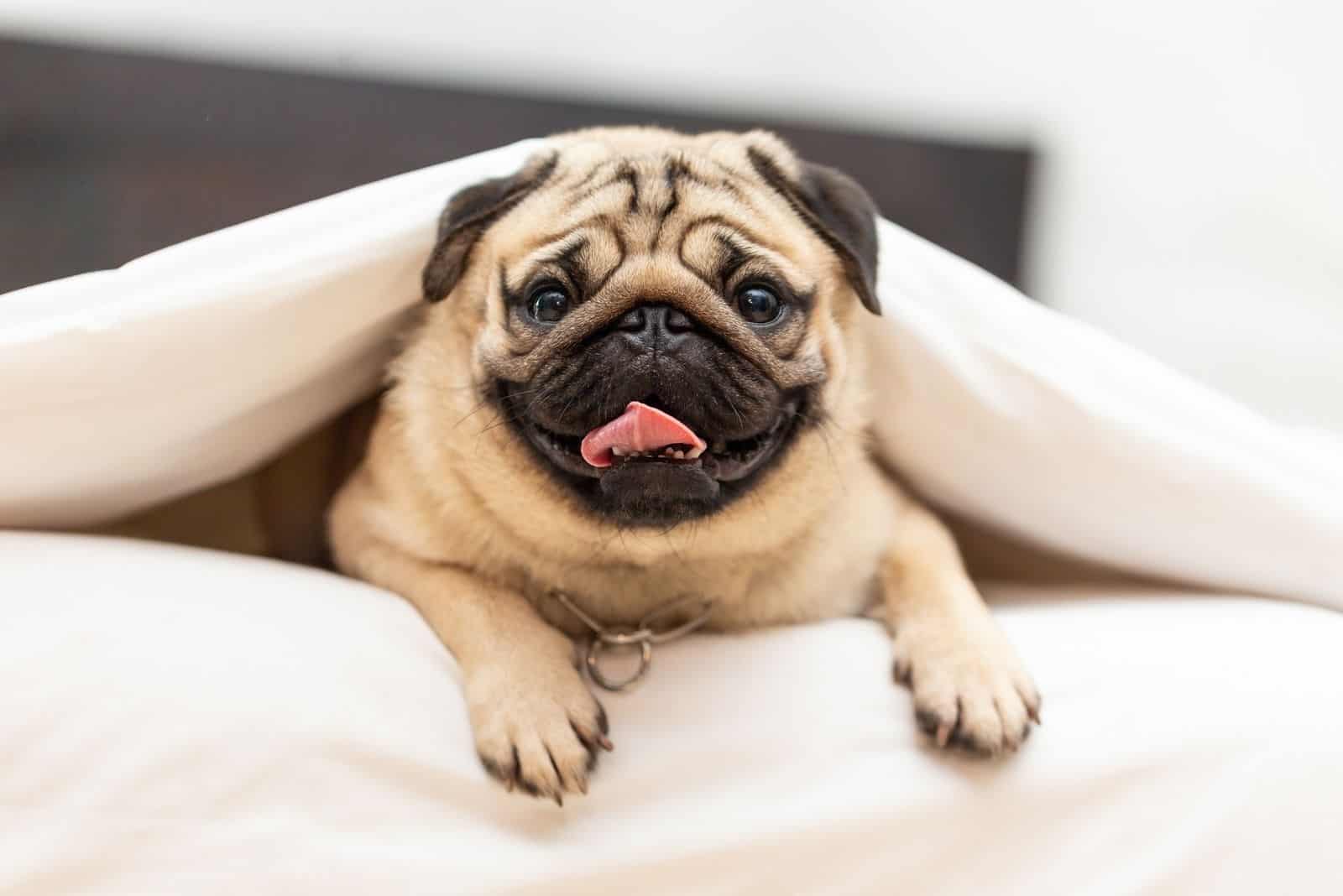
The Pug has won the hearts of millions of dog lovers worldwide with its unmistakable squished-up, wrinkly face and bulging eyes.
Although some people might not think of them as cute, they are adorable nonetheless because of their sweet, affectionate nature. They are endlessly playful, with an infectious sense of mischief and fun. They are good with children and strangers, and they usually want to make friends with everyone they meet, including other dogs.
Their smooth, short coat comes in four colors: black, fawn, apricot, and silver fawn, although the American Kennel Club only recognizes the first two.
This coat needs brushing every day in order to get rid of loose hair and dead skin cells (dander). They aren’t classed as hypoallergenic, and they actually suffer from allergies themselves.
With a history stretching back over two thousand years, the pug has earned its reputation as a lapdog and companion dog.
It was the favorite of many Chinese emperors for centuries, and it was jealously guarded against outsiders for many years. Eventually, Dutch traders were allowed to bring some out of the country, and the rest is history!
Measuring between 10 and 13 inches at the shoulder, and weighing only 14 to 18 pounds, these are small dogs with big personalities.
They need about forty minutes of exercise each day to use up their energy levels, and these should be in short bursts.
A couple of brisk walks and some playtime will do the trick, but always take care not to overdo this, especially in hot weather. These dogs can overheat quickly or develop breathing difficulties when pushed too hard.
The Corgi
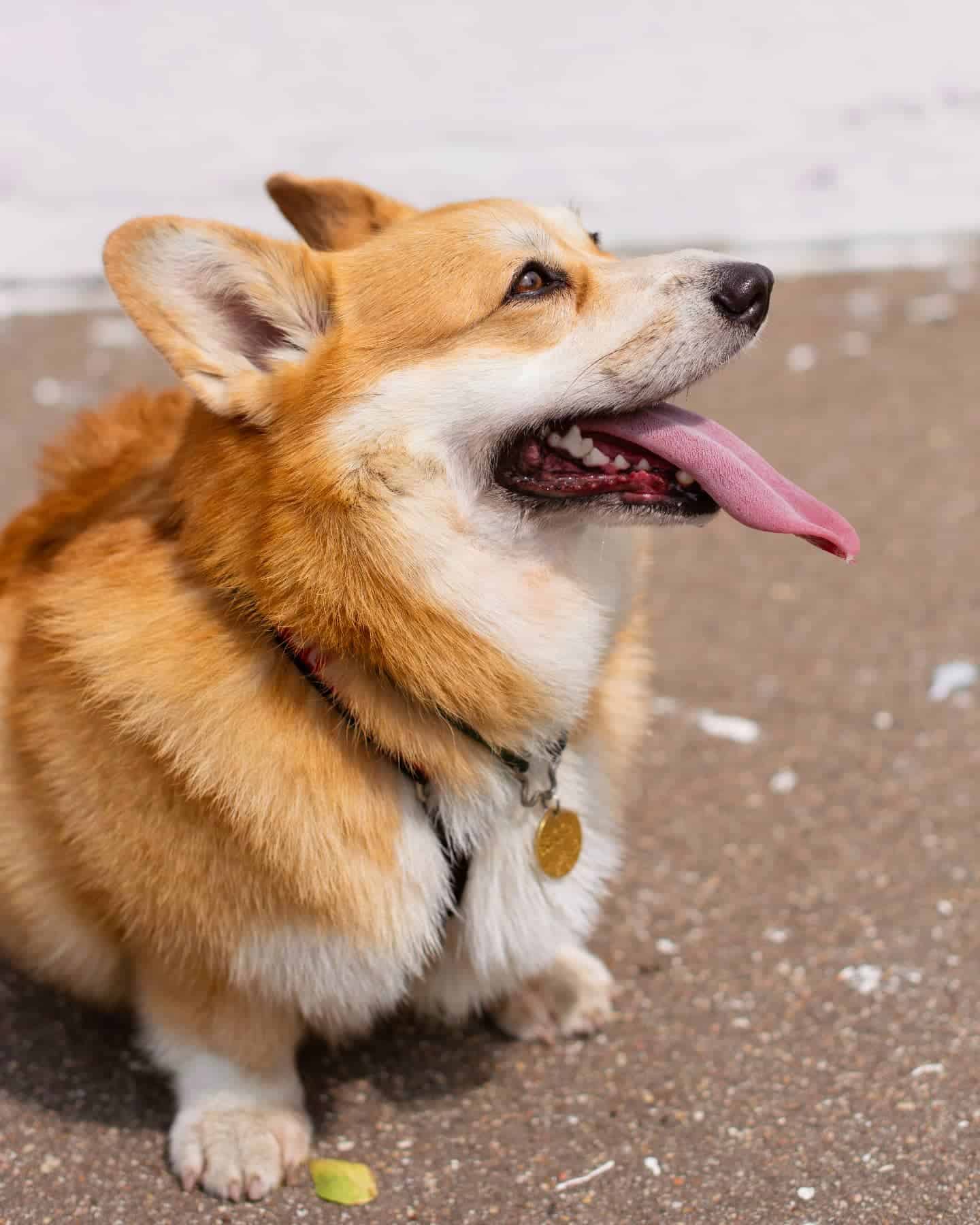
Photo from: @laewtae_my_corgi
Actually, that should be Corgis as there are two separate breeds: the Pembroke Welsh Corgi, and the Cardigan Welsh Corgi.
Although they have been bred together in times past, they have their own distinct history, and they have been classed as two separate breeds since 1934 despite their similar looks.
Both were used as herding dogs in the rugged Welsh hills, bred to have short legs that helped them avoid being kicked in the head by cattle as the dogs dashed in to nip at their heels. This nipping action was a way to make slow-moving cattle speed up or get back in line.
Corgis also learned to be good watchdogs, alerting their owners to any unwanted visitors in the night and scaring away any beasts that strayed too close to the farmsteads.
The main differences between the Pembroke and the Cardigan Corgis are in their skeletal structures. The Cardigan Corgi is larger-boned than the Pembroke, although there isn’t much difference in their height: they both measure between 10 and 12 inches, with the Cardigan possibly being half an inch taller.
Both have dense double coats (long or short) that blow in spring and fall, filling your home with fluff if you’re not careful! Between them, they only have nine recognized coat colors, although there are around fifteen or more non-standard colors.
The Pembroke’s official colors are black & tan, fawn, red, and sable, and the Cardigan Corgi’s official colors are black & white, brindle & white, red & white, sable & white, and blue merle & white.
Outwardly, the Cardigan Welsh Corgi appears more fox-like, especially their tails, ears, and coloring. Their ears are rounded, while the Pembroke Corgi’s ears are more triangular and pointed. Both breeds have large heads, long, heavy, stocky bodies with short legs, and are regarded as dwarf breeds.
Many people believe that the Pembroke Corgi is born without a tail. This is not true, although a lot of these dogs are born with a bobtail. The truth is that Pembrokes can be born with a tail, but it is docked a few days after birth when the breeder ties a band around the tail to cut off circulation; after which, the tail dies and falls off.
In the past, it was thought that this was done to stop the tail from getting in the way or trodden on by cattle. Today, docking serves no purpose and offers no benefits or advantages. It is done merely to conform to breed standards.
Many countries have banned the practice in line with animal welfare laws.
As for their history, the Cardigan Corgi is the older of the two breeds, probably brought to the UK by the ancient Celts around 1200 BC. Pembrokes followed almost 2,000 years later, and have been around since at least the year 1000 AD, possibly coming over with the Viking invaders.
Both the Pembroke and the Cardigan Welsh Corgi absolutely thrive on being in human company, and they have a lot of love to give.
They especially adore children and like to join in fun and games, though that herding instinct sometimes comes flooding back and they might start rounding them up! There’s also a chance that they’ll nip at kids’ heels, so you need to watch out for this behavior.
These undesirable traits can be ironed out by getting your dog trained and socialized, but you’ll still need to supervise them when kids are around. It’s also essential to educate children as to how they should behave around dogs.
These are dogs that love to be busy, so give them plenty to do and they’ll be happy. Mental stimulation is just as important as physical exercise because they are both intelligent breeds.
This means that you need to give them a challenge; something to test their mental skills, such as entering them into dog sports, giving them a puzzle toy, or inventing a game that involves finding a treat.
They need about an hour of daily exercise, split into several short walks. They are not long-distance runners, but can cope with a mile or two if they are fit. They can also manage a hike of up to eight miles, but remember they have little legs!
Of the two breeds, the Pembroke is probably the more outgoing and excitable, while the Cardigan is more reserved, tending to take a moment to consider a situation before going ahead.
Both of these popular breeds make brilliant family dogs, bringing many years of joy and happiness to thousands of people around the world.
The Porgi
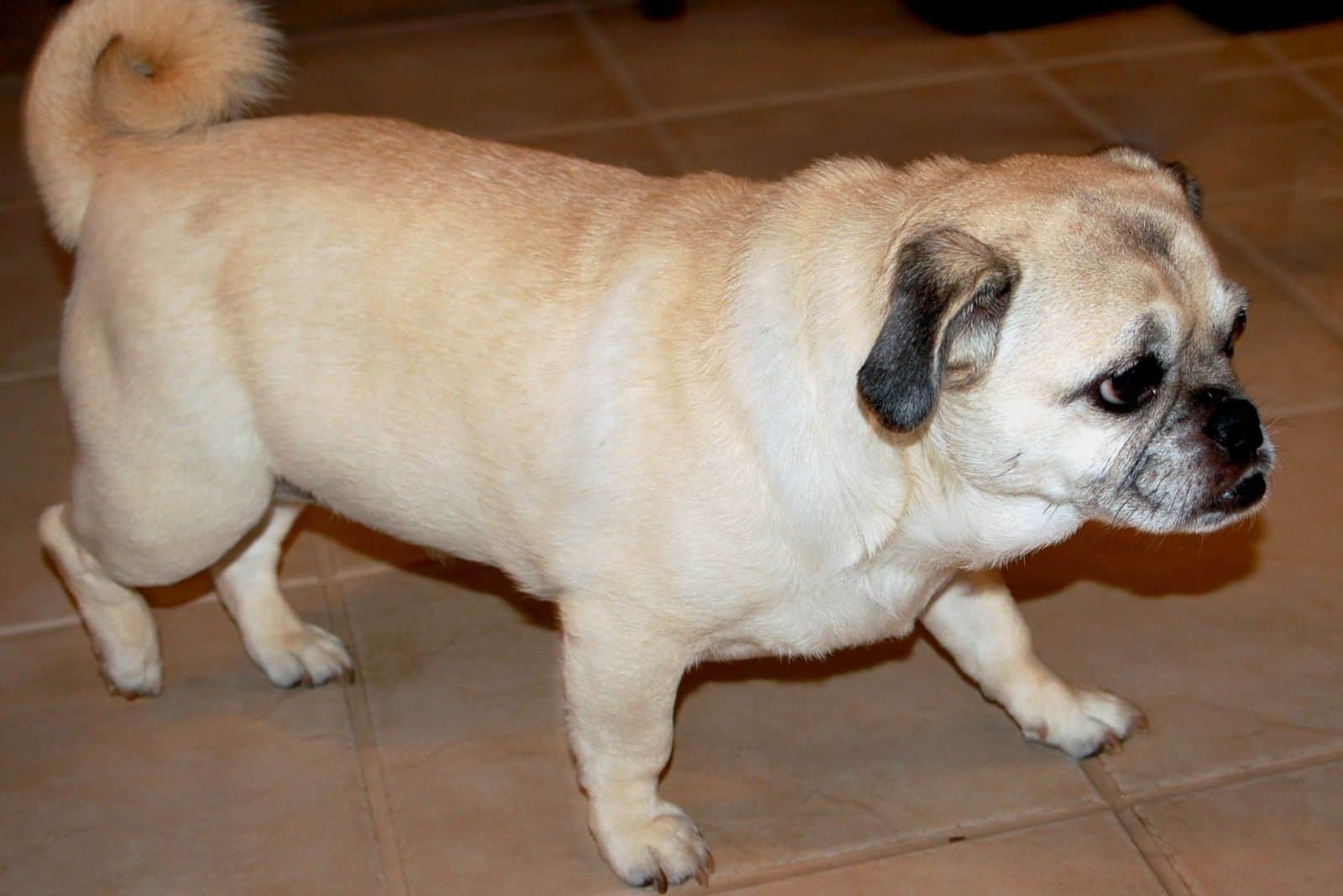
What do you get with the Corgi Pug mix?
Well, you should be prepared for a lot of love, goofiness, and fun!
This is one friendly doggy that will melt your heart in an instant. But, don’t mistake their sense of fun for silliness as these are very intelligent dogs.
The Corgi’s smartness shines through, though that’s not to say that the Pug doesn’t have anything to offer in this area. Because of this, you’ll need to keep them active and occupied, using up those high energy levels as well as testing their sharp minds.
This adorable little bundle of fur won’t like being left alone for long. Separation anxiety could be a real problem, so make sure you have a contingency plan for those times when it’s unavoidable. Before leaving them alone, it’s a great idea to wear them out with a long walk and a vigorous playtime.
Bear in mind, though, that this dog has short legs and might tire quite easily. Also, it may have the Pug’s problem relating to breathing problems, although it shouldn’t be as pronounced as its snout won’t be as short as the Pug parent.
Grooming is important for all dogs, and the Porgi’s short coat ideally needs brushing daily to keep it in good health.
This will also limit the amount of hair that falls around your home. A monthly bath will help with this as well as keeping your pooch smelling fresh.
As part of their grooming routine, you should regularly check their ears and eyes, cleaning and wiping when necessary.
What Does A Corgi Pug Mix Look Like?
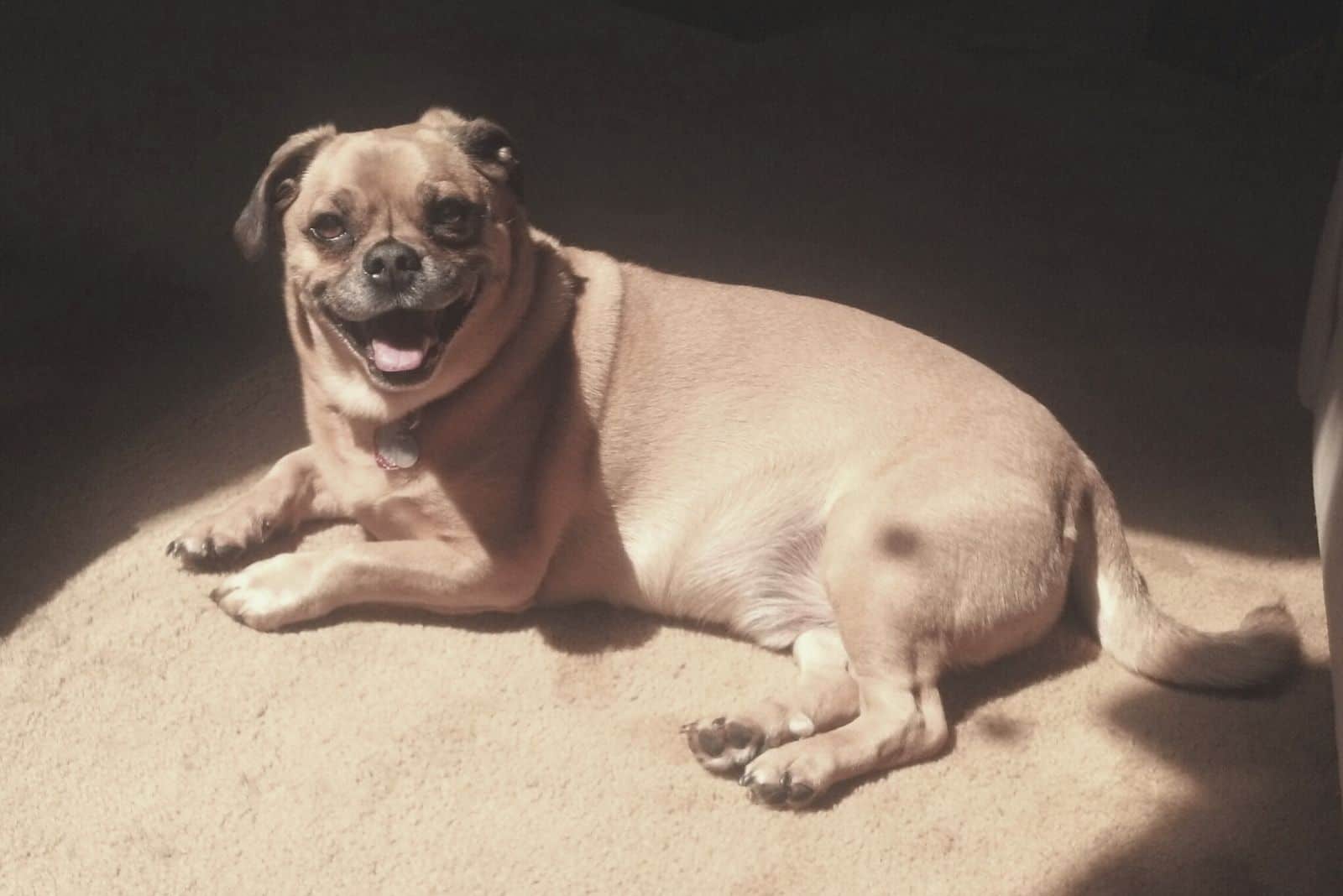
As with all mixed-breed dogs, they resemble both of the parent breeds in certain ways. The Corgi Pug mix dog will probably measure between 10 and 13 inches high at the shoulder, and weigh somewhere between 18 and 30 pounds.
Most Porgi examples so far tend to echo the fawn color seen in the Pug, usually with a black muzzle, but their coats can also be red, black, or brown.
The Porgi’s head size falls somewhere between the two parent breeds: not as flat as the Pug, and not as long in the snout as the Corgi. Their bodies usually lean more towards the Corgi side, being solid and stocky.
Their ears flop down at the tips rather than stand upright, adding to their endearing look. And, to top this all off, they have a curly, fluffy tail!
Corgi Pug Mix Puppies
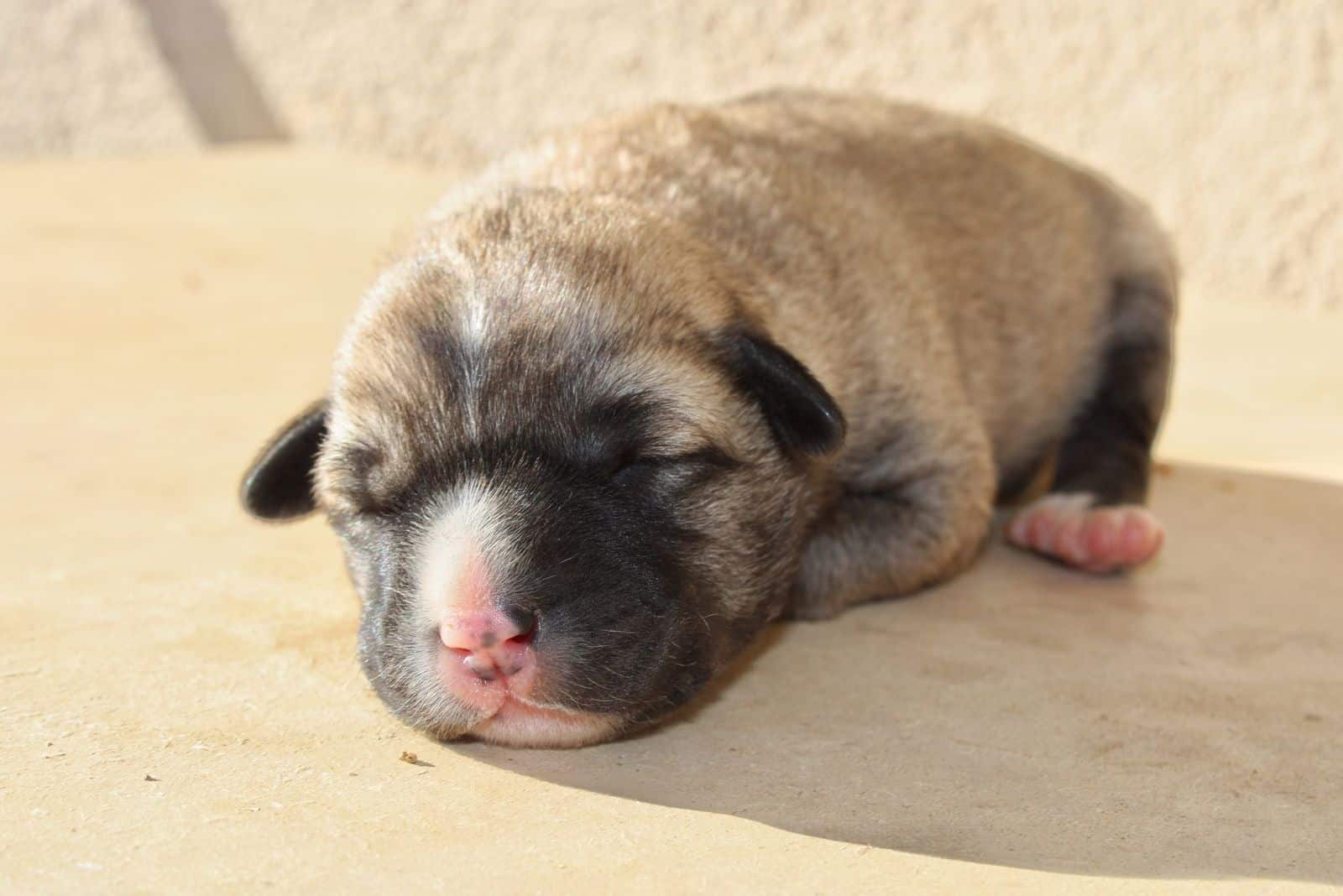
It’s important to issue a warning here: if you visit a kennel that has a litter of Corgi Pug mix puppies, you’re guaranteed to fall in love with them all! You’ll have the heart-wrenching task of picking one and leaving the others.
Before you get to this stage, it’s essential that you have everything in place in order to ensure that your pup has the best chance to thrive. This means you’ll need to splash out a fair bit of cash on equipment such as a dog crate, toys, bedding, food and water bowls, collars, a leash, and so on.
You should research which dog food is best for your new pup as they should be weaned by the time you bring them home. Pugs and Corgis love their food, and there’s no reason to think that the Porgi will be any different.
Obesity can be a killer, so feed your pup wisely! Speak to your vet if you’re unsure about how much to give them, but it’s best to feed your pup several small meals throughout the day.
Once your pup is settled into its new home, you’ll start to see his personality emerge. He’ll be cheeky and will push the boundaries to see what he can get away with. This is when you need to start training and socialization as these curb any bad behavior and put you in control. Be aware that the Corgi’s stubborn streak can show itself, and your
Porgi may get bored during the training sessions. But, if you persevere, they’ll soon get the message!
Be prepared for some sleepless nights, too. These little dogs have small bladders, and they may need to go to the bathroom during the night. Potty training shouldn’t take any longer than four to eight weeks, and it requires a bit of patience.
Be persistent and consistent. If you can learn the signs, then take your Porgi outside to a specific spot where they can do their business every time you think they need to go.
Never mix playtime or feeding time with these toilet breaks as the pup will start to connect them. Always reward your pup with cuddles, praise, and/or treats when they go successfully.
Another cause of broken sleep is a howling or a whining puppy. If they’ve been to the bathroom (it’s always best to take them as late as possible before going to bed), then it may be that they just want your company. In this case, move their bed close to you and you’ll probably find that they are happy to settle down.
If they continue to make a fuss, then it might be that they are sick, so look for any symptom to give you a clue. It could be that they are teething, which is a particularly trying time for all involved, especially the pup! Their gums will be sore and painful, which could understandably make them cranky.
Make sure you have plenty of chew toys or special teething toys. Buy some that can be filled with liquid and stored in the refrigerator. Some dog owners use cold carrot sticks or frozen strawberries and pieces of banana as a natural alternative.
Don’t worry – this time will soon pass, and your furry friend will have his permanent teeth! When they do eventually arrive, it’s always best to brush them in order to keep them in good condition.
Think you can cope with all that? Then, it’s time to look at how much you might have to pay for your Corgi Pug mix.
Corgi Pug Mix Price
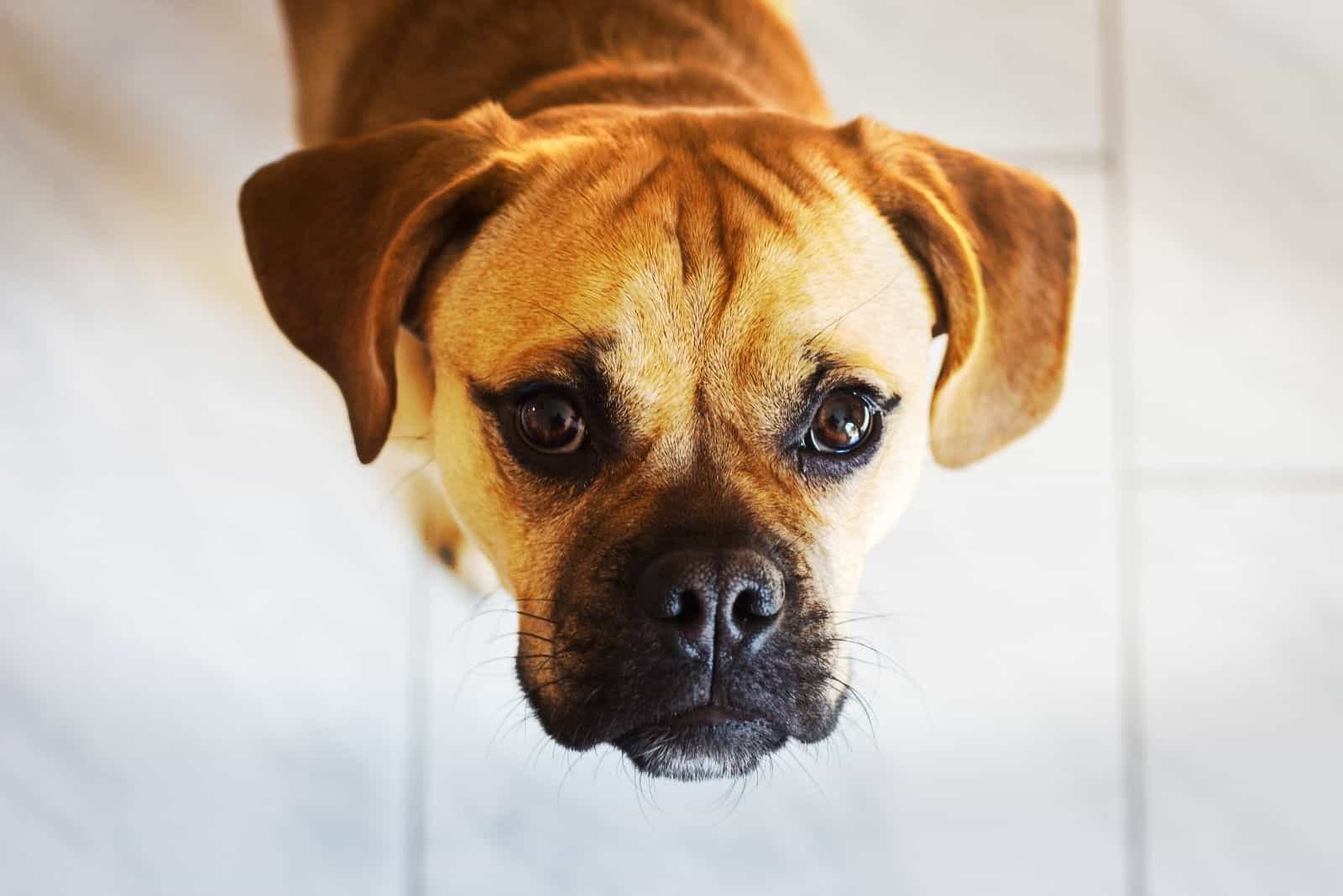
You’re probably looking at between $700 and $1,000, maybe more.
The recent pandemic saw a surge in pet ownership, with people rushing out to buy dogs as companions through the lockdown periods. Many breeders responded by raising their prices, so you may find that the real price is much higher.
It’s a good idea to check any local rescue center and dog shelter as they may have one waiting for a home… you never know.
Don’t be too tempted by low prices as some people will sell them at rock-bottom rates to get rid of pups quickly. This often means that there’s something wrong with them. Likewise, if the price is way too high, then listen to those inner alarm bells!
The best approach is to speak to the breeder in person and check out the establishment. You’ll see how they treat their dogs, and you will get a feel for the kind of person they are. You have the right to do this as you are about to part with your hard-earned cash, so you need to make sure that it’s a good investment.
An established, well-respected breeder will probably charge more, and this is fair enough. They will have built their reputation over time, and will have invested a lot of money and effort in their dogs.
If it seems like they’re charging too much, remember that you’ll be getting a healthy pup that came from good stock. Breeding, when done properly, is an expensive business.
Even though you might think the price is too high, the breeder may only be making a small amount of profit, or even incurring a loss!
Corgi Pug Mix Health Problems
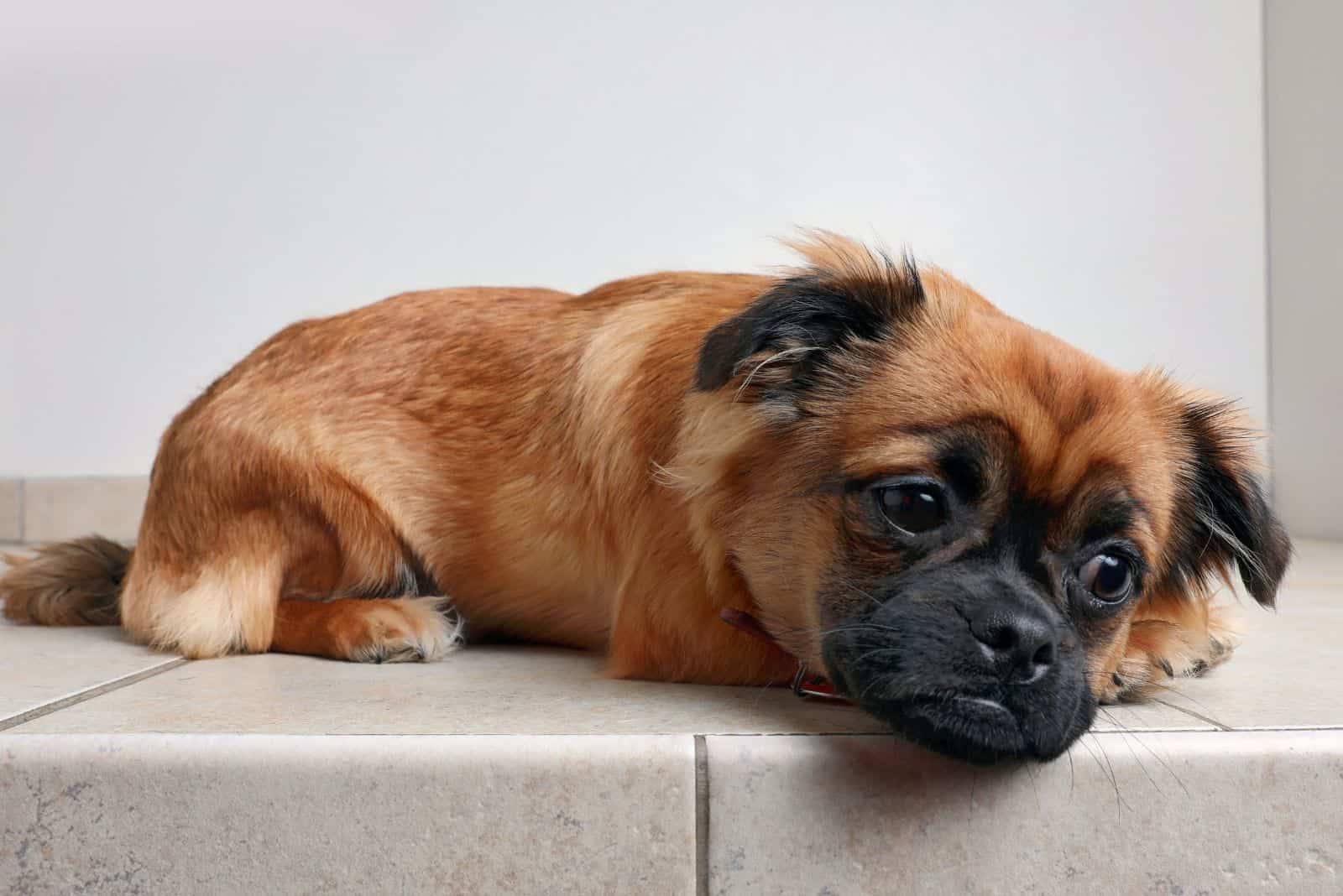
There is always a risk that a pup will inherit genetic faults and diseases from the parents, though as we explained earlier, mixed-breed dogs tend to be healthier. This doesn’t mean that they will be 100% free from health issues, so we need to make ourselves aware of any potential problem in case we need to take action.
As this is a relatively new hybrid dog, there are few records to refer to, so we need to look to the parents to see what health problems they have. The following list covers many of the diseases and health conditions of the Corgi and the Pug parents:
• Intervertebral disc disease is also known as a slipped disc or fused disc (there are two types). The spongy padding between the vertebrae sometimes calcifies (dries out) or bursts, leaking fluid into the surrounding area. This can be extremely painful, and can lead to paralysis of the hind limbs.
• Patellar luxation happens when the kneecap slips out of place. You’ll notice the dog pulling up short when this happens, usually with a sharp yelp because of the pain. In mild cases, the patella slips back into place, but sometimes this condition requires surgery to widen the groove in which the kneecap sits.
• Obesity is a danger to most breeds, usually occurring in old age because the dog is less active but is fed the same amount of food. It can also happen at any time in the dog’s life if they don’t get enough exercise and have too much food and too many treats!
The extra weight puts increased pressure on the heart and the joints, leading to arthritis and heart disease.
• Hip dysplasia is a painful condition caused by a malformed hip joint where the bones rub together as the dog walks.
It often leads to arthritis when the dog is older. Surgery is the best way to resolve this problem.
• Eye problems are common in both breeds, although the Pug is particularly prone to corneal ulcers. Their flat faces also make them vulnerable to eye injuries and eye proptosis, where the eyeball is knocked from the socket.
• Allergies are a common problem in dogs, especially wrinkly ones like Pugs. These are mostly connected with food and environmental allergens (pollen, dust, or mold spores).
Many of the Pug’s health problems stem from the fact that it’s a brachycephalic breed. This means that it has a flat face and a very short muzzle. As dogs naturally have long snouts that act as a cooling system, brachycephalic dogs are prone to overheating.
Their skulls have been bred to be smaller; too small to contain all the soft tissue. This restricts airflow resulting in breathing problems. Because of this, flat-faced breeds are not suited for very hot climates, are at risk of fainting or collapse, and don’t make good swimmers.
This physical trait is known to shorten their lifespan as these dogs can asphyxiate because of it. Most Pug owners don’t recognize the symptoms, and simply think that their pooch is snuffling, coughing, sneezing, or snoring.
The good news for the Porgi is that its snout is slightly longer, thanks to the Corgi, so it’s likely that these problems will not be as pronounced in this wonderful little dog.
As for the other health concerns, the best way to limit them is to find a reputable breeder, then make sure you get your Porgi checked out by the vet regularly.
Is The Porgi The Dog For You?
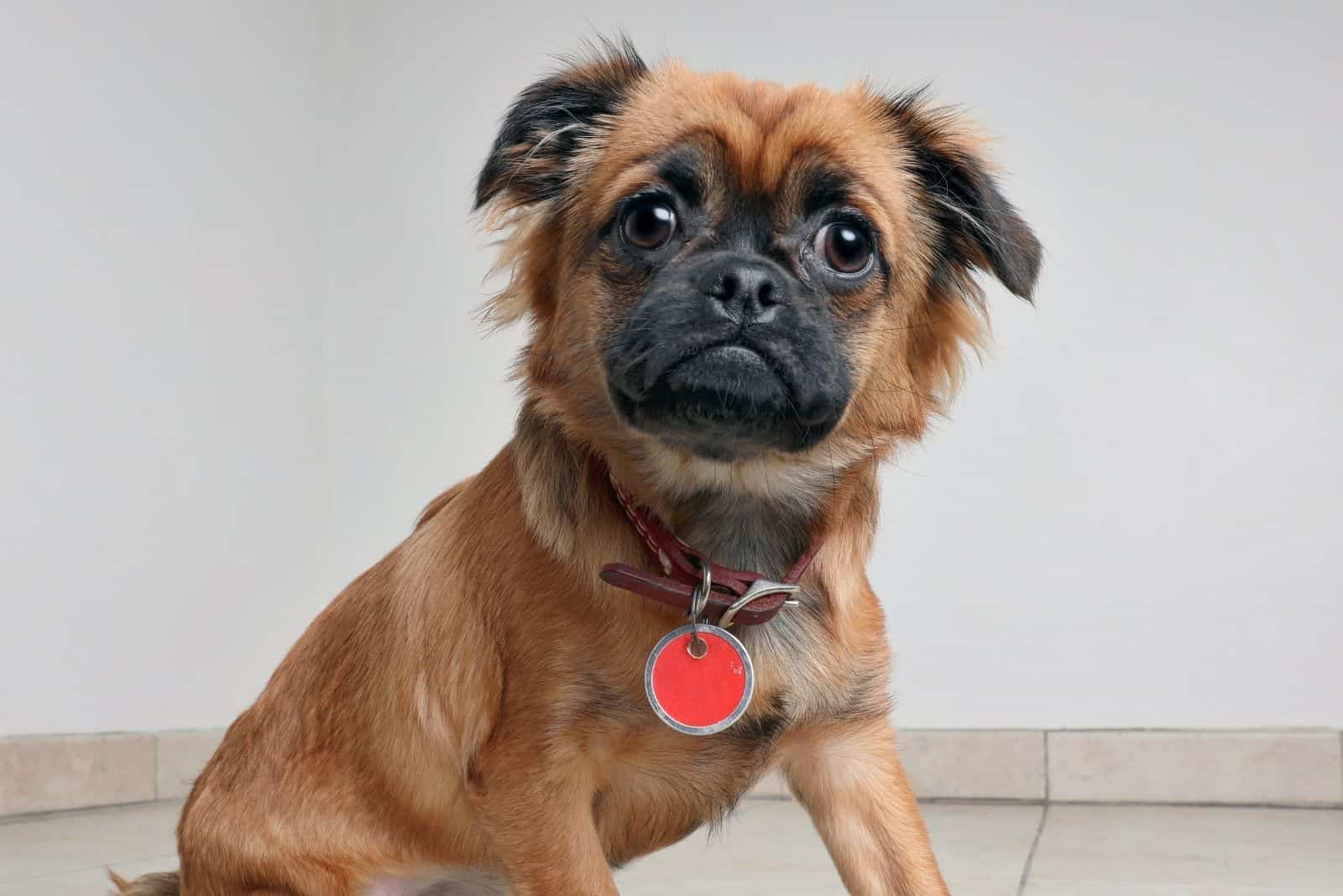
Well, we’ve looked at the Pug and Corgi parents, then at the Corgi Pug mix.
Now, it’s up to you to decide!
Without a doubt, this is a wonderful dog. She has the playfulness and sense of fun of both the Pug and the Corgi. She inherits a sweet, affectionate nature that just makes you want to cuddle her all day long. And, to top it off, she’s great with young children.
So, is this the perfect family dog?
To answer this, we must take into account the fact that we can only provide a generalized view of any breed. Each dog has its own personality, and some traits (especially in mixed breed dogs) can be exaggerated over others, leaning more towards one of the parent breeds than the other.
For example, you might find that stubbornness is a real problem in your own dog, or that she is more vocal than you expected.
The best thing you can do is to not look for the perfect dog as it probably doesn’t exist. Instead, you should try to find a dog that matches your own circumstances, lifestyle, and family dynamic.
Then, you need to commit to training and socialization as these will teach the dog what’s expected of it. Being as they are very eager to please you, they will soon fall into line.
The Porgi is small enough to fit into any home setting, and it does as well in the town as it does in the country. They are very adaptable, and they will quickly settle down into your routine.
As for their health, being a mixed-breed gives them the advantage of a wider gene pool and reduces the risk of inherited diseases and conditions that usually plague purebred dogs.
However, there’s still a chance that they may suffer from some of the health problems listed above, so you’ll need to keep a close eye out for any symptom. As always, regular health checks at the vet is a good way of keeping on top of the situation.
If your Porgi favors the Pug in that it has a flatter face, you’ll need to account for this when you exercise them, particularly in hot weather.
Make sure they don’t exert themselves too much, and always keep some fresh, cool water on hand. Let them lie in the shade whenever possible, and keep them away from deep water such as pools, rivers, or lakes.
In conclusion, the Porgi is simply one of the loveliest dogs around. This is hardly surprising, considering that it is made up of two brilliant pooches.
However, caring for any dog requires a great deal of effort on the owner’s behalf. It takes commitment, care, love, and even (sometimes literally!) blood, sweat, and tears.
And, almost every single dog owner will tell you that it is completely worth it.
If you think you’ve got what it takes, then what are you waiting for? There’s sure to be a Porgi out there for you!
Read Next:
• Are Pugs Aggressive? (5 Reasons, Signs, And Prevention)
• Pug Rottweiler Mix: The Charisma Is The It Factor
